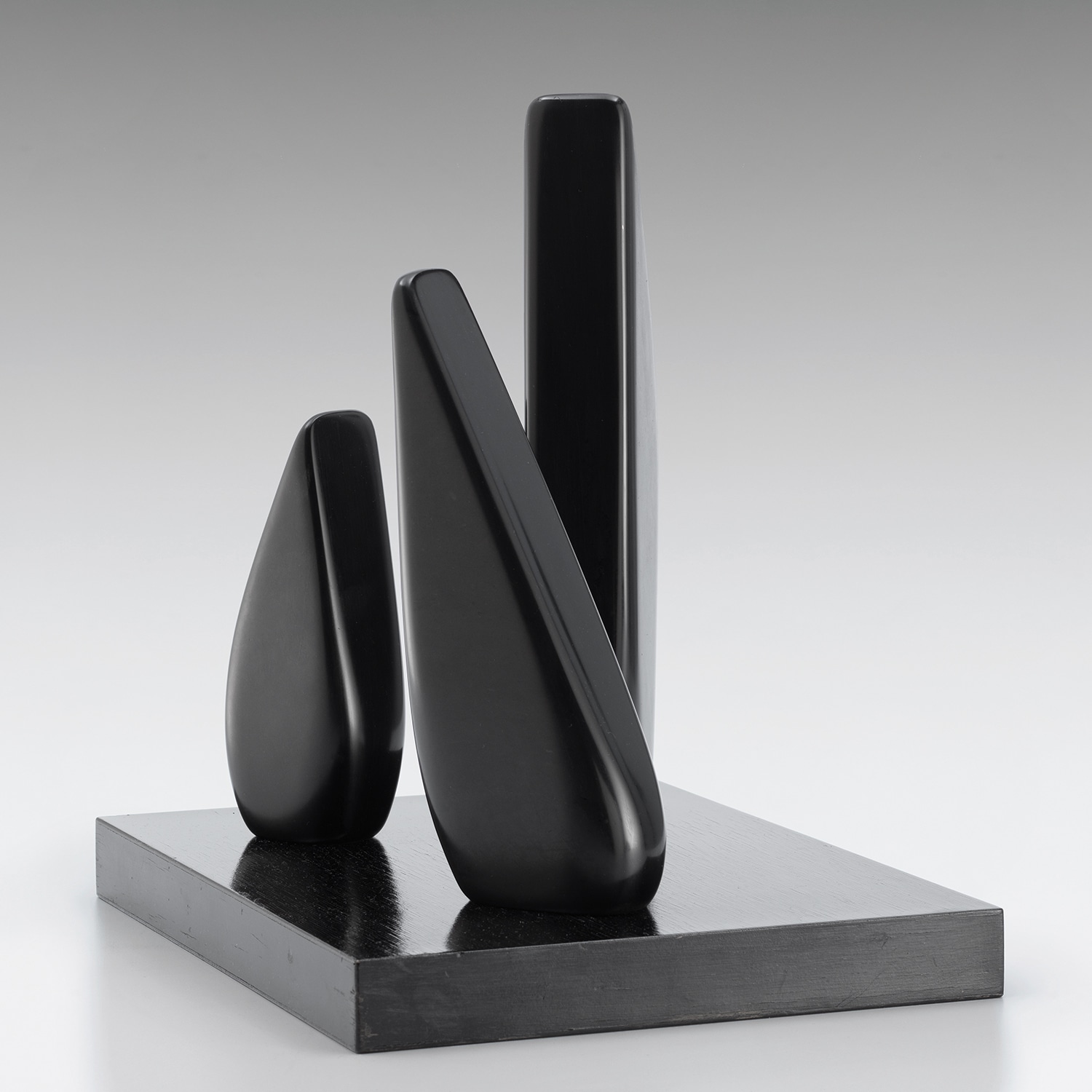





Property of an Important Private Collector being sold to benefit the Geisel School of Medicine at Dartmouth College
140
Barbara Hepworth
Three Forms (Winter Rocks)
slate on a lacquered wood base
sculpture 13 x 10 1/2 x 7 in. (33 x 26.7 x 17.8 cm)
overall 14 3/4 x 14 x 11 in. (37.5 x 35.6 x 27.9 cm)
overall 14 3/4 x 14 x 11 in. (37.5 x 35.6 x 27.9 cm)
Executed in 1965.